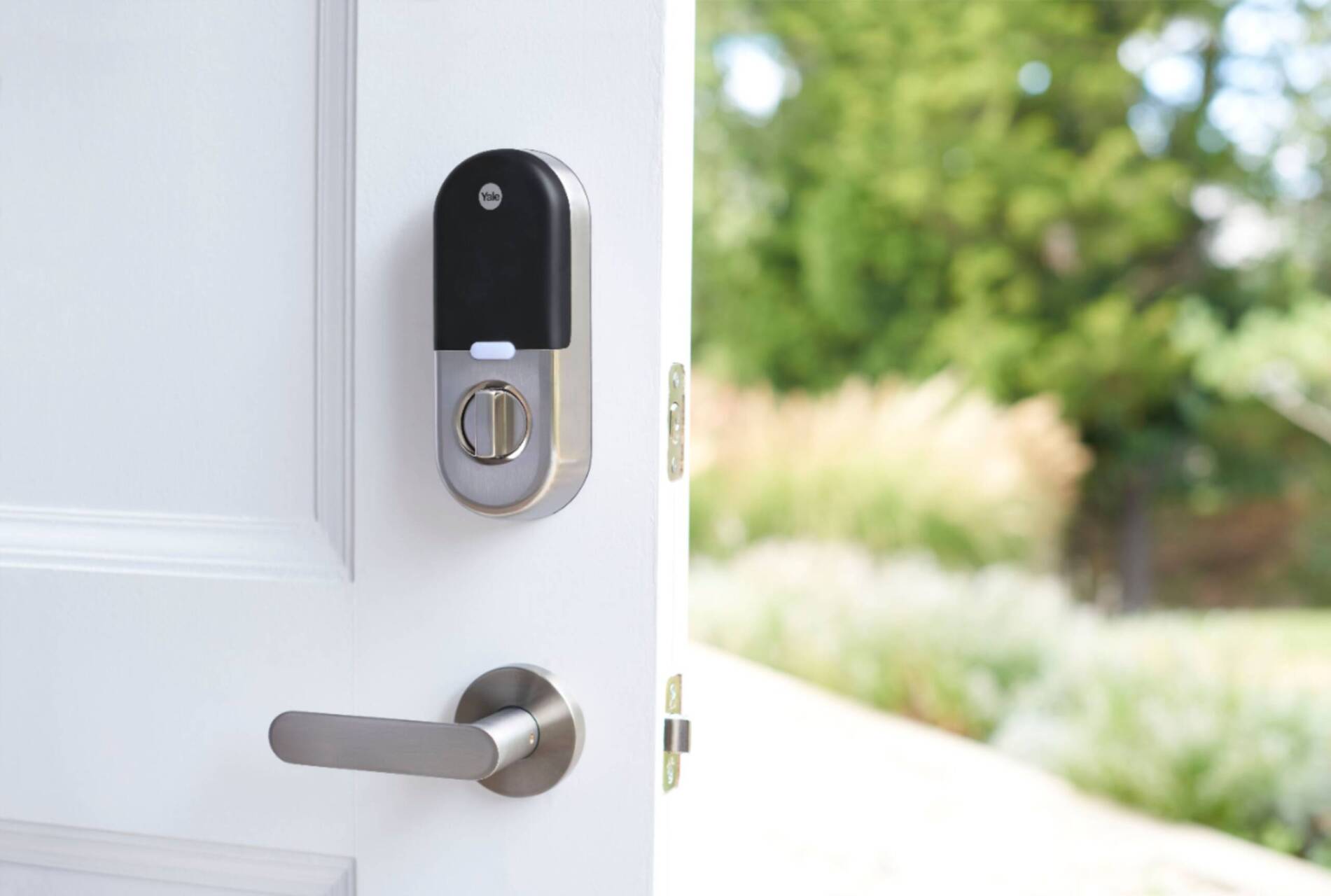Overview
The first step is to make your home more difficult to enter than the next. Remember, the burglar may simply bypass your home if it requires too much effort or requires more skill and tools than they possess. Most burglars choose to enter through the front, back, or garage doors. Experienced burglars know that the garage door is usually the weakestfollowed by the back door. They also provide the most cover. Burglars know to look inside your car for keys and other valuables so keep it locked, even inside your garage. Use high quality Grade-1 or Grade-2 locks on exterior doors to resist twisting, prying, and lock-picking attempts. A quality deadbolt lock will have a beveled casing to inhibit the use of channel-lock pliers used for forced entry. A quality door entrance set will have a ‘deadlatch’ mechanism to prevent slipping the lock with a shim or credit card.
- Use a solid core or metal door for all entrance points
- Use a quality, heavy-duty, deadbolt lock with a 2.5cm throw bolt
- Use a quality, heavy-duty, entrance set with a dead latch mechanism
- Use a heavy-duty strike plate with 7.5cm screws to penetrate into a wooden door frame
- Use a wide-angle 180° peephole mounted no higher than 1.5m.
The most common way used to force entry through a door with a wooden frame is to kick it open. The weakest point is almost always the strike plate that holds the latch or lock bolt in place. The average door strike plate is secured with only one-half inch screws set into the door frame molding. These lightweight moldings are often tacked on to the door frame and can be torn away with a firm kick. Because of this construction flaw, it makes sense to upgrade to a four-screw, heavy-duty, high security strike plate. They are available in most quality hardware stores and home improvement centers and are definitely worth the extra expense. Install this strike plate using 7.5cm screws to cut deep into the door frame stud. This one step alone will deter or prevent most through-the-door forced entries. You and your family will sleep safer in the future.
Sliding Glass Doors
Sliding glass doors are usually installed at the rear of a home or apartment making them good candidates for entry by a burglar. In warm climates, an experienced burglar knows that sliding glass doors are often left standing open for ventilation or for pet access. Since they slide horizontally, it is important to have a blocking device in place to prevent sliding the door fully open from the outside. This can be easily accomplished by inserting a wooden dowel or stick into the track thus preventing or limiting movement.
Sliding glass doors are notorious for failing to prevent a forced entry attempt especially in apartment buildings. This is because of the wear and tear they receive and due to the inadequate nature of many of the latching mechanisms. Sliding glass doors usually do not have locks on them, only latches. The latches are often made of aluminium and can become worn or out of adjustment. The most common methods used to force entry, apart from breaking the glass, is by prying the door near the latch or lifting the door off the track. The blocking devices described above solve half the equation. To prevent lifting, you need to keep the door rollers in good condition and properly adjusted. You can also install anti-lift devices such as a pin that extends through both the sliding and fixed portion of the door. There are also numerous locking and blocking devices available in any good quality hardware store that will prevent a sliding door from being lifted or forced horizontally. Place highly visible decals on the glass door near the latch mechanism that indicates that an alarm system, a dog, or Neighbourhood Watch identification is in place. Burglars dislike alarm systems and definitely dogs.
- Use a secondary blocking device on all sliding glass doors
- Keep the latch mechanism in good condition and properly adjusted
- Keep sliding door rollers in good condition and properly adjusted
- Use anti-lift devices such as through-the-door pins
- Use highly visible alarm decals, beware of dog stickers, or Neighbourhood Watch stickers.



